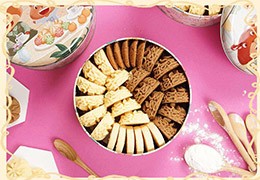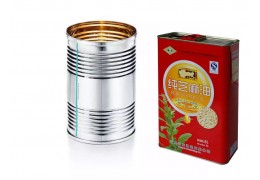En tant que fabricant...
Production standard requirements for food tin cans!
Food tin cans are food packaging boxes made of tinned thin steel plates through different processes such as welding, stamping or buckling, which can be used to package and protect food. When the finished food tin cans are made, the finished tin cans need to be inspected to see if their quality meets the relevant design standards and safety standards.

Common food tin can standards mainly include the following four aspects:
1. The standard of the main view: place the front of the food tin can directly in front and under the sunlight, and the outer surface of the food tin can can be observed.
2. The standard of the main parts: reflect the position of the pattern, text, mark and bar code of the main body of the food tin can.
3. Standards for scratches: no more than 0.3mm*20mm on the printed surface of the food tin can, and no iron scratch marks are shown.
4. Standard for non-front view: the surface of tin cans other than the main view, such as the back, side, bottom, inner surface, etc.
Of course, it is far from enough to check whether the tin cans of finished food are up to standard. The leakage caused by trachoma in the tin cans, whether the printing is correct and complete, whether the welding is symmetrical, etc. should also be checked.
Nowadays, food tin cans have been unanimously recognized by the market in terms of product appearance and material, and many consumers are more inclined to use food tin cans for products. What is the reason for this phenomenon?

First of all, food tin cans are packaging containers between rigid packaging and flexible packaging. They are made of white paper, various colored cardboard and fine corrugated cardboard folded or pasted with other materials. The packaging material has a certain degree of flexibility, rigidity and higher compressive strength, and is not easy to deform compared with the bag-like flexible packaging container.
Secondly, the appearance of food tin cans is changeable. Printing technology can be used to achieve various flat patterns and colors on the tin can surface, which is beneficial to increase the visual impact of the product and play an effective promotional role. If it is made of paper composited with metal foil or plastic materials, it can replace rigid packaging containers made of glass, ceramic, metal, and plastic in many cases.
At the same time, food tin cans generally contain a small volume and can be packaged manually or mechanically, which is relatively simple to use.
The production process of food tin cans is more stringent than general packaging boxes, and involves a wider range. In the United States, the safety of food packaging and food inspection standards are the same. Tin cans must meet food-grade standards, which shows that people are concerned about food safety. Pay attention. As a professional tin box company, we will interpret the basic requirements of food tin cans for you:
5 basic requirements for food tin can production
The first basic requirement is safety. Because food is in direct contact with tin cans, safety is very important, and the most basic thing is to be harmless to the human body. Ensure that the food packaged in tin cans meet the national sanitation regulations, and the food tin cans must meet the relevant FDA sanitation standards.

The second basic requirement is airtightness. Because food is usually spoiled and deteriorated due to microorganisms, food tin cans must have reliable airtightness so that after heat sterilization, food can no longer be contaminated by external microorganisms.
The third basic requirement is corrosion resistance. A large part of food tin cans contain certain nutrients, organic acids and certain compounds, which will decompose during the high temperature and high pressure sterilization process, thereby increasing the corrosion of tin cans. Therefore, in order to ensure the long-term storage of food, the tin cans selected must have good corrosion resistance.
The fourth basic requirement is convenience. As a container for storing food, it must be convenient for consumers to carry and eat, and it must have the conditions for long-distance transportation.
The fifth basic requirement is to be suitable for industrial production. Food tin cans have to withstand various mechanical stamping, crimping, welding and other processes during the production process, and the demand is large and mass production is required, so it must have factory mechanization, Automated production requires high efficiency, stable quality, low cost and can meet the needs of modern production management.

















Derniers commentaires